Duplicate content refers to the presence of identical or similar content across multiple web pages on the internet.
This can occur when the same content is published on different sites or multiple pages of the same site, or when content is copied and pasted from one page to another, resulting in an exact or slightly different copy.
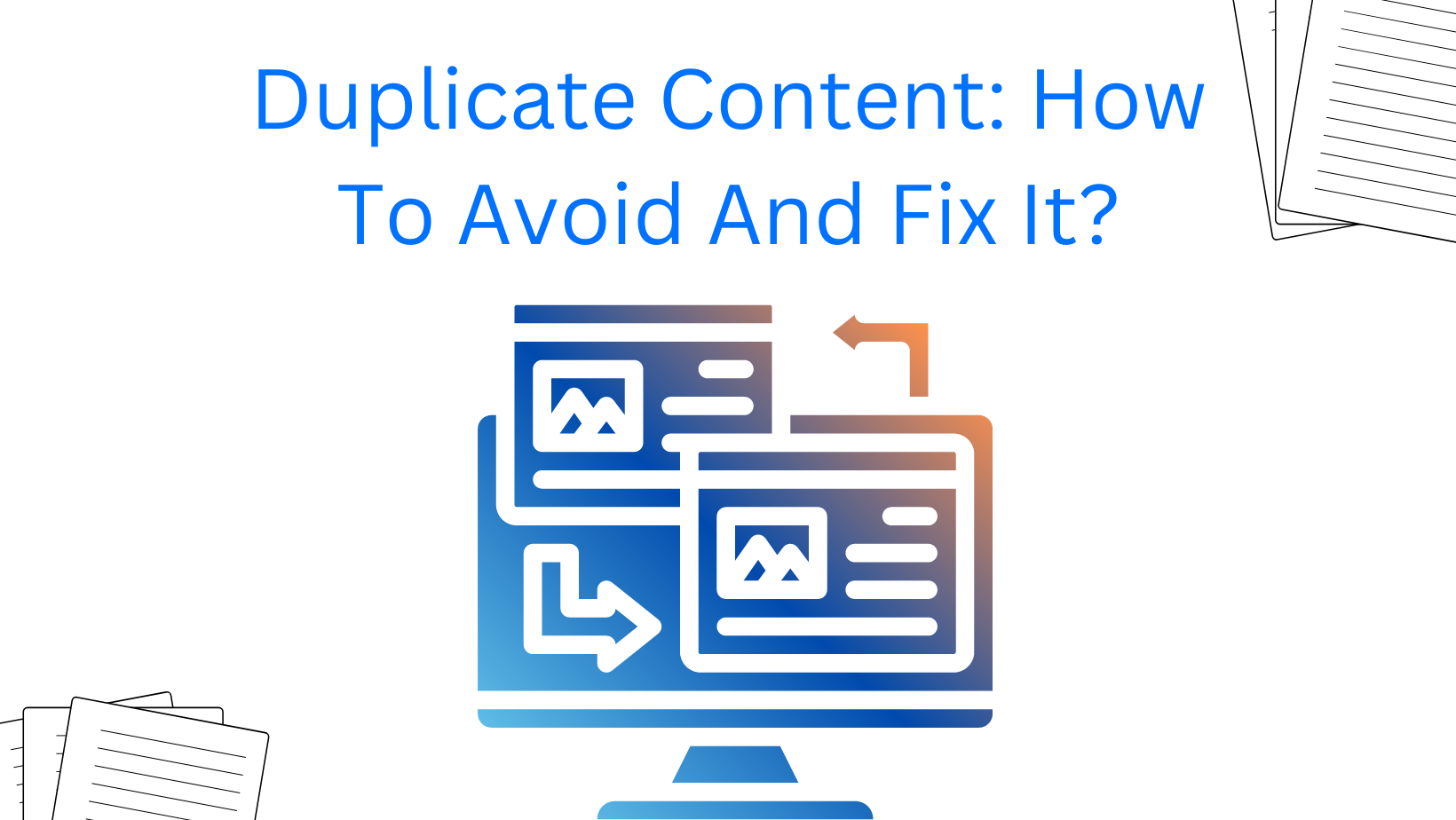
Page Contents:
How Duplicate Content Will Affect Your Website?
Duplicate content can hurt a website’s search engine optimization (SEO) efforts and credibility. Search engines like Google consider duplicate content as a signal of low-quality content, resulting in lower rankings and reduced visibility on search engine results pages.
Additionally, the presence of duplicate content can also lead to a higher bounce rate, as users may become frustrated with finding the same content repeatedly.
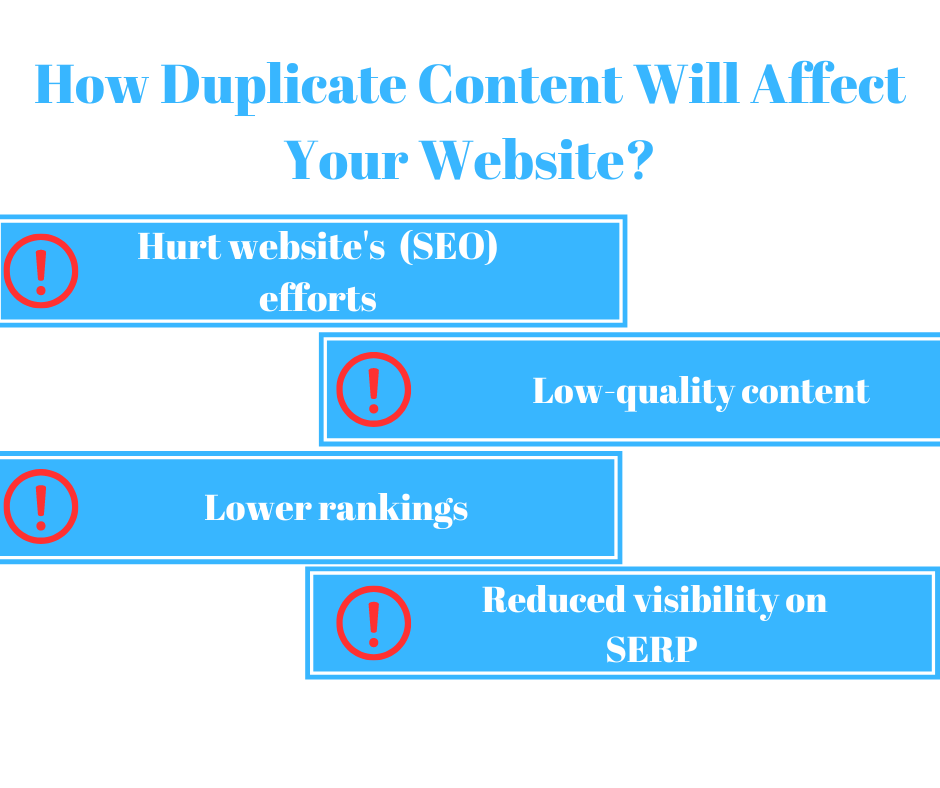
To avoid these negative consequences, it’s crucial to identify and fix any instances of duplicate content on your website. This can be done by conducting a thorough analysis of your website’s content and identifying any instances of duplication.
Once identified, you can take steps to remove or consolidate the duplicate content, such as redirecting URLs or using canonical tags.
Causes Of Duplicate Content
Duplicate content is a phenomenon that occurs when identical or very similar content appears on the internet in more than one place. It is a common problem that website owners face and can significantly harm their rankings on search engine results pages.
Duplicate content can arise due to several reasons such as website redesigns, content syndication, and content management system (CMS) settings.
Website redesigns can lead to duplicate content when changes are made to the website structure, navigation, or URLs.
Content syndication, which involves republishing content on multiple sites, can also cause duplicate content issues. CMS settings can also contribute to the problem by creating multiple versions of the same content.
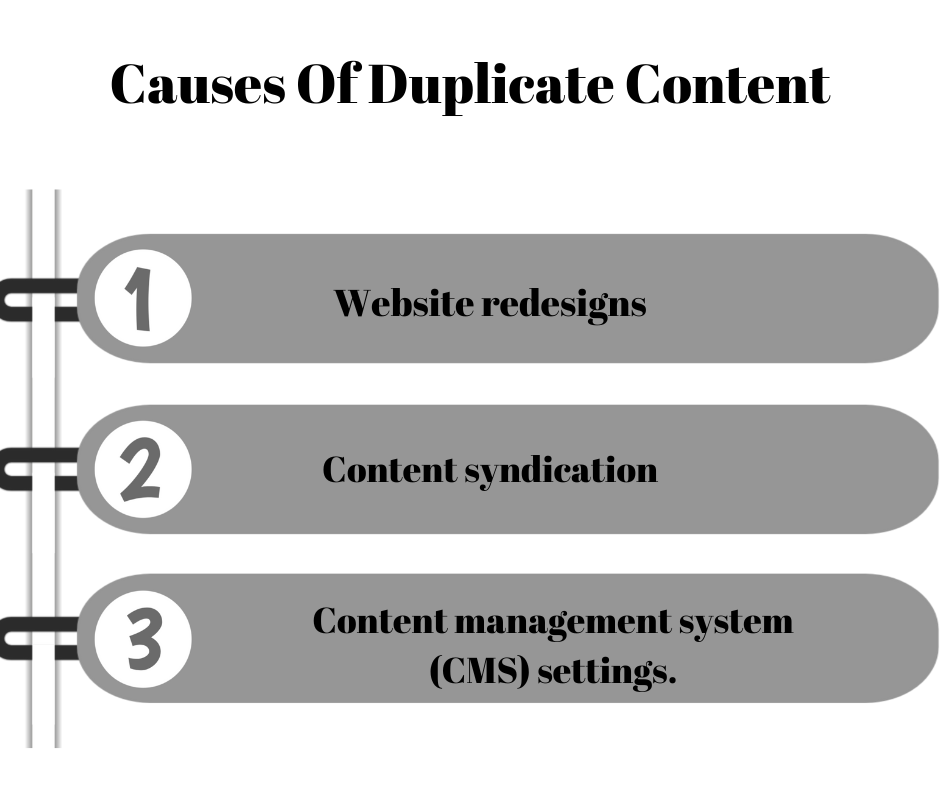
Duplicate content can harm a website’s search engine rankings by causing search engines to struggle to determine which version of the content to show in search results. It can also lead to a lower user experience as visitors may be confused or annoyed with seeing the same content multiple times.
Search engines view duplicate content as a problem because it creates confusion about which version of the content is the original and which are copies. This can lead to a decrease in user experience, as well as a decrease in the perceived value of the website.
Additionally, search engines may penalize websites that have duplicate content by lowering their rankings or even removing them from SERPs altogether. Therefore, website owners need to take proactive measures to avoid duplicate content and maintain their website’s rankings and reputation.
How To Avoid Duplicate Content?
Duplicate content is a major issue that can affect the search engine rankings of your website. To avoid this problem, there are several techniques and best practices that you can follow.
Canonical tags are HTML tags that tell search engines which version of a page is the original version. This is useful when you have multiple versions of a page, such as a mobile version or a desktop version. By using a canonical tag, you can ensure that search engines only index the original version of the page.
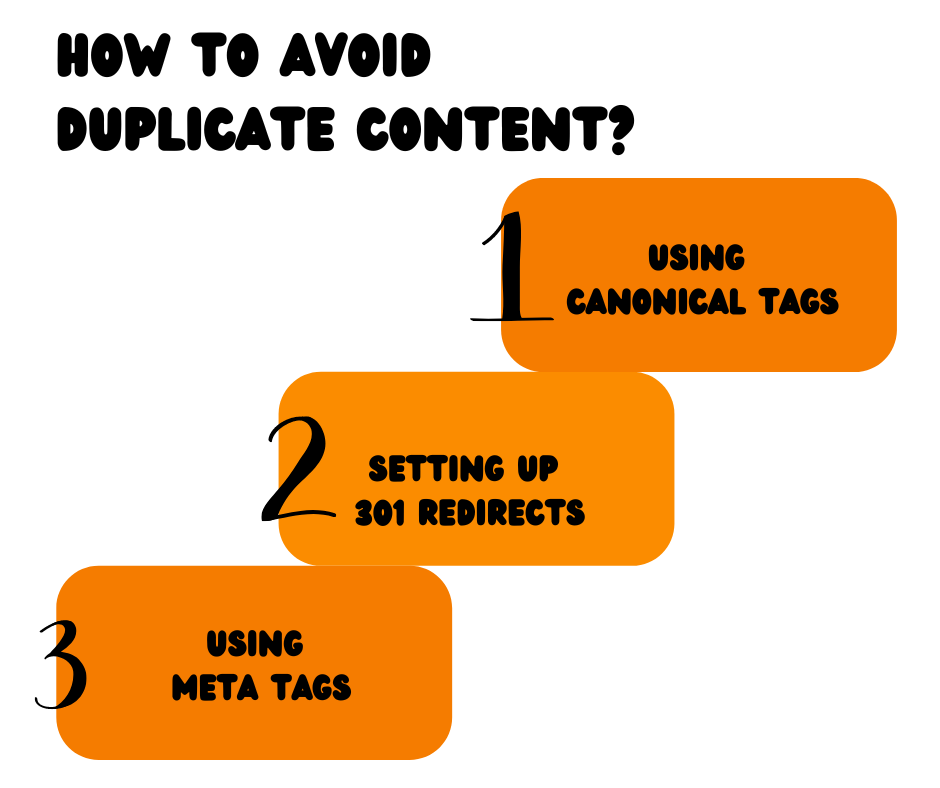
Setting up 301 redirects is another technique that can help prevent duplicate content. This involves redirecting visitors from one URL to another, usually from an old URL to a new URL. This can be useful when you change the URL of a page or when you move content from one page to another.
In addition to these techniques, there are also several best practices that you can follow when creating content. These include writing original content that is relevant and useful to your audience, avoiding duplicate content on your site, and using proper attribution when using content from other sources.
How To Fix Duplicate Content?
Dealing with duplicate content can be a challenging task for website owners or managers. However, it’s a crucial task to address to avoid any negative impact on your website’s search engine rankings.
Duplicate content refers to having identical or similar content on multiple pages within your website or across different websites.
The first step to dealing with duplicate content is to identify it. Luckily, there are various tools and techniques available to help you identify duplicate content. For instance, you can use site crawlers or Google Search Console to identify any duplicate content on your website.
Once you’ve identified the duplicate content, it’s essential to take action and fix it. There are several techniques you can use to address duplicate content.
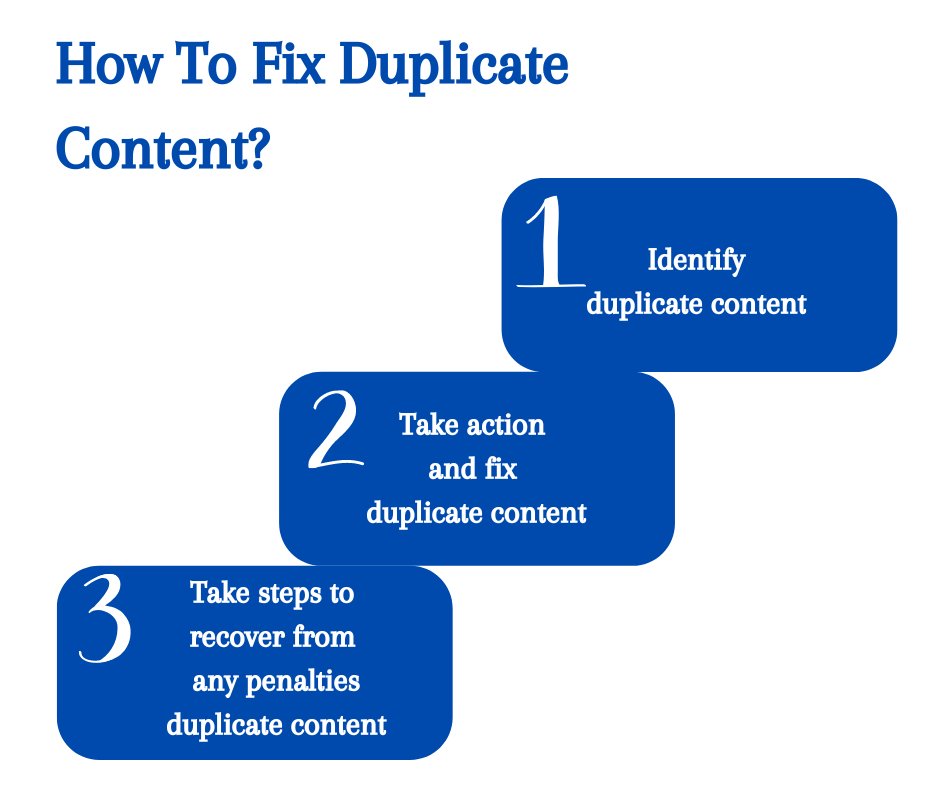
One of the most common techniques is canonicalization, which involves specifying the preferred version of a page that should be indexed by search engines.
Another technique is using 301 redirects to redirect traffic from duplicate pages to the original page. Additionally, you can use the “no index” meta tag to signal to search engines not to index a particular page.
It’s important to choose the best approach based on the type of duplicate content you have and the structure of your website. For example, if you have duplicate content on different websites, you should reach out to the website owners and request them to remove the duplicate content.
In addition to fixing the duplicate content, it’s crucial to take steps to recover from any penalties that may have been imposed by search engines. This can involve submitting a reconsideration request to Google or other search engines or improving the overall quality of your website’s content.